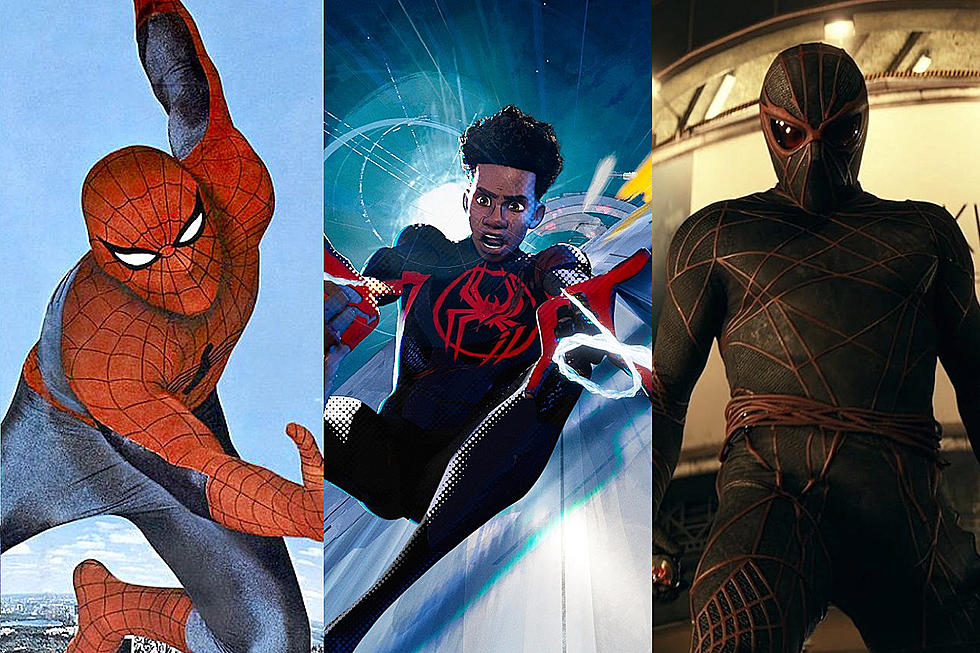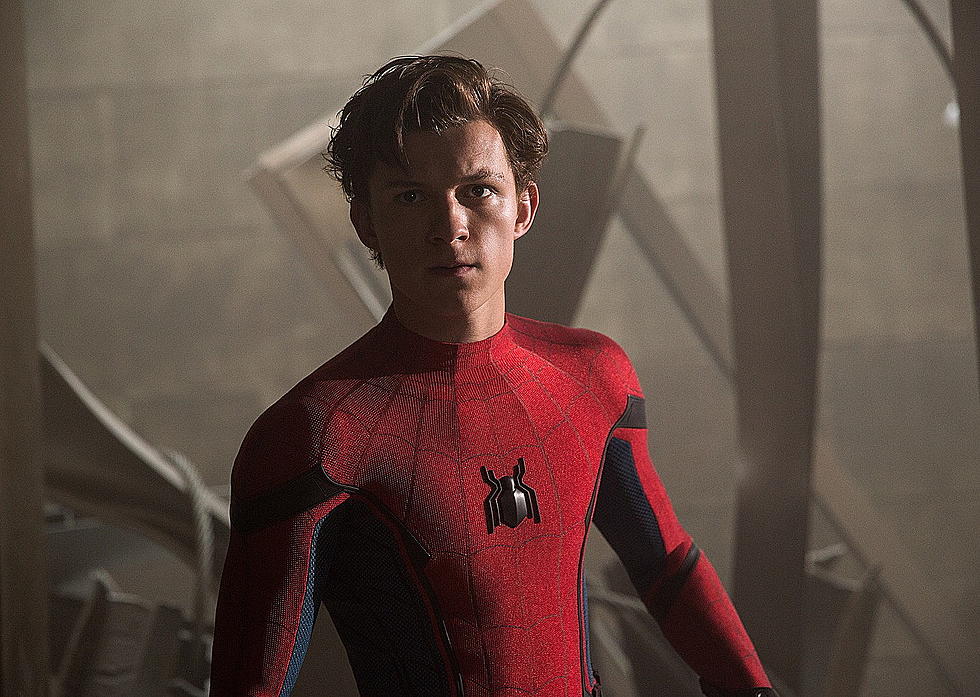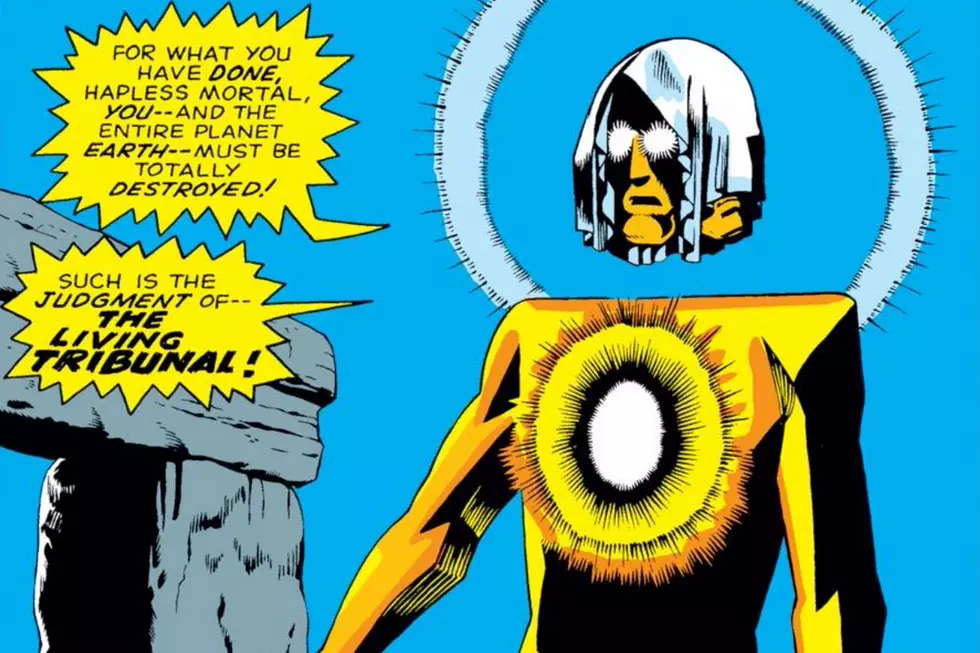
So Much More Than Spider-Man: A Birthday Tribute to Steve Ditko
If Steve Ditko's only accomplishment in comics had been co-creating Spider-Man, he would still be one of the medium's most famous creators. But that's not all he's done. In the 60-plus years since he started drawing for Key Publications and Atlas --- the company that would become Marvel --- Ditko put an indelible stamp on comic books, while remaining something of a mystery; he's one of comics' most notoriously reclusive creators.
Ditko was born on this day in 1927 --- though judging by his reputation, he probably won't make that big of a deal out of it. He got his start drawing romance and science-fiction comics, but he would find his wheelhouse while working at Charlton, where he drew mystery, science fiction and horror stories.
A bout of tuberculosis in 1954 sent him home to Johnstown, Pennsylvania for a time. When he moved back to New York, he continued to work with Charlton, co-creating Captain Atom in 1960. He also started working with writer/editor Stan Lee on stories for the back pages of Atlas/Marvel's anthology books, including Strange Tales and Tales to Astonish.
Lee considered those five-page stories to be filler, so he'd let Ditko more or less draw whatever he wanted, based on a one-line description of the story, and script the stories after they were drawn. The stories --- odd morality plays, often with twist endings --- proved to be a big hit, and that storytelling process would become known in the decade that followed as "The Marvel Method."
Perhaps no superhero represents "The Marvel Method" better than Spider-Man, who first appeared in Amazing Fantasy #15 in 1962. Though Lee often tells the story of publisher Martin Goodman giving him the green light to run with an idea of a teen superhero inspired by a fly crawling on a wall, many of the elements of the Spider-Man readers know today were Ditko's creation. Ditko all but scrapped early designs of the character developed by Lee and Jack Kirby, redesigning the costume and giving him web shooters on his wrists.
Ditko ultimately drew 40 issues of Amazing Spider-Man (38 regular issues and two annuals) in his initial run, securing co-plotting credit starting with #25 after demanding it from Lee. According to numerous accounts, including one in author Sean Howe's Marvel Comics: The Untold Story, Ditko was drawing pages for the last issues of his run on the book having had no communication with Lee at all. Though it was widely believed at one time that Ditko quit the series over a disagreement over the identity of the Green Goblin, Ditko told Wizard magazine in a rare 2002 interview that "there couldn't have been any disagreement or agreement... no problems between us concerning the Green Goblin or anything else from before issue #25 to my final issues."
In his essay "Why I Quit S-M, Marvel," Ditko says it was actually Lee's unwillingness to talk to him that spurred his departure.
The year after Spider-Man's debut, Ditko co-created Doctor Strange with Lee, though Lee gave Ditko the lion's share of the credit for the character. Ditko's Doctor Strange stories took place in strange, mystical landscapes that were very different from the grounded reality of Peter Parker. Ditko drew Doctor Strange stories in Strange Tales from issue #110 to #146. Ditko also drew the interior pages of the first story with Iron Man's modern red-and-gold suit, and designed the Incredible Hulk villain The Leader.
In the mid 1960s, during and after his tenure at Marvel, Ditko returned to Charlton to pick back up on Captain Atom, work on Blue Beetle stories and create The Question, a character who used showed a more aggressive side than many other heroes of the time, and whose personal philosophy ran in line with Ditko's own objectivist politics. Ditko made the connection even more apparent with the 1967 creation of Mr. A, a creator-owned character with many characteristics similar to those of The Question. Ditko would continue to work on Mr. A stories for decades, last publishing one in 2009.
In two short stints at DC Comics, Ditko co-created The Creeper and created Shade, the Changing Man.
From the mid-1970s until the 1990s, Ditko worked in a freelance capacity with stints at DC, Marvel, Pacific Comics, Eclipse Comics and Dark Horse. In that time, he worked on some surprising properties, including Mighty Morphin' Power Rangers comics, Indiana Jones, ROM: Spaceknight, and a short-lived 1987 series called Chuck Norris and the Karate Kommandos.
Of course, Steve Ditko couldn't stop being Steve Ditko during that period. In 1992, he co-created Squirrel Girl in an issue of Marvel Super-Heroes with writer Will Murray; a character that has proved to have more enduring appeal than one might have expected.
Though Ditko is now essentially a recluse, he has still been publishing his own comics. Here's a good breakdown of some of his comics output since 2008. They're surprisingly violent and very political. Even more recently, Ditko has published a series of four-page essays on topics including creativity, Marvel, himself, comic fans, free will and so on. No matter what, it seems, Steve Ditko can't stop creating.
More From ComicsAlliance









